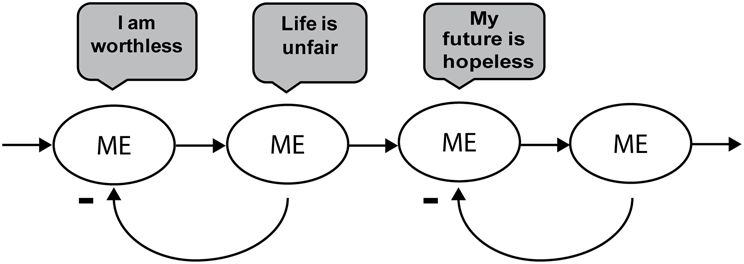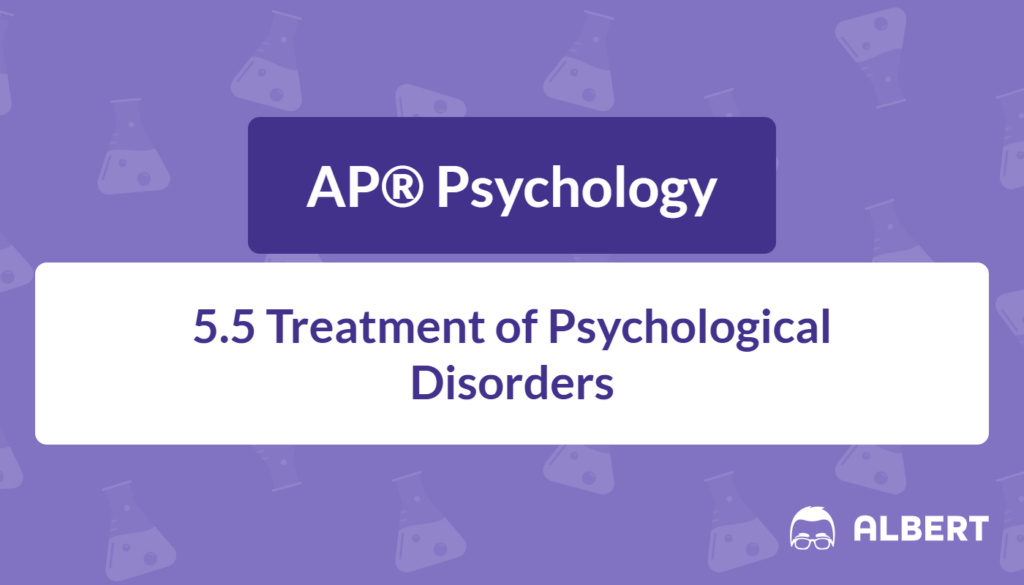What We Review
Many people benefit from mental health services, yet some remain unaware of the range of available treatments. Understanding treatment options is important because choosing the correct approach can significantly improve well-being. This study guide covers key treatments for psychological disorders, such as psychotherapy, medications, and more. It also highlights how mental health service providers must understand ethics and historical trends matters when working in this field. These concepts are explained in bite-sized steps below.
Research and Trends in the Treatment of Psychological Disorders
Research shows that psychotherapy is generally effective for several mental health concerns. Experts often rely on evidence-based interventions, meaning therapeutic methods that are supported by scientific studies. Therapists also use cultural humility and build a strong therapeutic alliance to deliver helpful mental health services. Cultural humility means recognizing and respecting the diverse backgrounds of clients.
- Evidence-Based Interventions → Based on research
- Therapeutic Alliance → Trusting relationship between therapist and client
- Cultural Humility → Respecting each client’s unique identity
Example:
Consider a high school student experiencing anxiety before final exams. The student meets with a therapist who uses cognitive-behavioral therapy (CBT). Step by step, the therapist:
- Teaches the student techniques to identify anxious thoughts about test failure.
- Guides the student to restructure these thoughts into more realistic evaluations (e.g., past successes, adequate preparation).
- Practices relaxation strategies together.
- Monitors the student’s progress and adjusts the treatment plan.
By using an evidence-based approach, the therapist helps the student reduce anxiety and perform better on exams.
Practice Problem:
A patient with persistent worries tries one session with a new therapist. Which elements are most important for building a therapeutic alliance?
Step-by-Step Solution:
- Recognize the meaning of “therapeutic alliance.”
- Identify a therapist’s ability to empathize, listen carefully, and maintain respect.
- Conclude that trust, understanding of cultural background, and consistent support are critical for fostering a positive bond.
Historical Context of Mental Health Treatment
Throughout history, mental health treatment has evolved beyond large institutions. Hospitals once housed people with mental disorders for extended periods without community-based support. Over time, improvements in psychotropic medications and psychotherapy have allowed many individuals to receive treatment outside institutions. This shift is referred to as deinstitutionalization.
- Institutionalization → Placing individuals in specialized facilities for round-the-clock care
- Community-Based Treatment → Integrating support in local clinics and outpatient settings
- Psychotropic Medications → Drugs that target mood and behavior by interacting with the nervous system
Example:
Lobotomies were once a common procedure for patients with severe disorders. However, increased understanding of the brain and the development of safer treatments reduced the use of such invasive methods.
- Early approach: Lobotomy used to be considered a cure for extreme behaviors.
- Over time: Negative side effects and ethical concerns emerged.
- Modern day: The practice is largely discontinued, replaced by more effective treatments like medication and therapy.
Practice Problem:
Explain how improvements in medication contributed to deinstitutionalization.
Step-by-Step Solution:
- Psychotropic medications helped stabilize severe symptoms.
- When symptoms were managed, many patients no longer needed long-term hospital stays.
- Therefore, society moved toward community-based treatment centers.
Ethical Principles in Treatment
In mental health services, ethical standards set by the American Psychological Association (APA) guide therapists. These principles include:
- Nonmaleficence → Avoiding harm to clients
- Fidelity → Being faithful to professional relationships
- Integrity → Promoting accuracy, honesty, and truthfulness
- Respect for Rights and Dignity → Valuing each person’s autonomy and worth
Therapists must handle sensitive information and follow ethical rules to protect clients’ well-being.
Example:
Imagine a counselor who learns private information about a client’s family. The counselor also realizes this information could harm someone if it remains hidden. Balancing respect for confidentiality with the need to prevent harm can pose an ethical dilemma. The therapist may consult professional guidelines and even discuss the situation (in general terms) with a supervisor to decide the responsible path forward.
Practice Problem:
A therapist learns that a client has an intention to harm another person. How should ethical principles guide the therapist’s actions?
Step-by-Step Solution:
- Identify the principle of nonmaleficence (do no harm).
- Recognize the therapist’s duty to warn or protect potential victims if there is serious, imminent danger.
- Understand that therapist confidentiality has limits, so the therapist may need to inform authorities or the intended victim.
Psychological Therapy Techniques
Therapy methods vary but share the goal of promoting well-being. Some common methods include:
- Psychodynamic Therapies: Focus on uncovering the unconscious mind using dream analysis and free association.
- Cognitive Therapies: Target faulty thinking, such as the cognitive triad—negative thoughts about oneself, the world, and the future.
- Applied Behavior Analysis (ABA): Uses principles of conditioning to modify harmful behaviors (e.g., through token economies or exposure therapies).
- Cognitive-Behavioral Therapies (CBT): Combine cognitive restructuring with behavioral strategies, like fear hierarchies or activity scheduling.
- Humanistic Therapies: Emphasize person-centered approaches, which include active listening and unconditional positive regard.

Example (Cognitive Restructuring):
A teen with a fear of public speaking works with a cognitive therapist:
- Identifies negative thought patterns (e.g., “I always fail in front of people”).
- Challenges these thoughts with evidence (e.g., “I gave a presentation last month with no issues”).
- Develops more balanced thinking (e.g., “I can prepare and do well”).
- Practices relaxation strategies before speaking.
Practice Problem:
A client is applying principles of ABA to overcome a fear of dogs. How might systematic desensitization be used?
Step-by-Step Solution:
- List stimuli from least to most frightening (e.g., pictures of small dogs up to touching a large dog).
- Work through this hierarchy slowly, pairing each step with relaxation techniques.
- Reinforce progress with small rewards or positive feedback.
- Repeat until fear is greatly reduced or eliminated.
Group vs. Individual Therapy
Group therapy brings together multiple people with a common challenge, facilitated by a therapist. Individual therapy involves a private one-on-one session. Both can be effective, but differ in certain ways.
Benefits of Group Therapy
- Social support and shared experiences
- Opportunities to practice interpersonal skills
- Lower cost per session for many participants
Benefits of Individual Therapy
- Personalized treatment and tailored feedback
- Greater privacy when discussing personal details
- Flexible scheduling options
Example:
A student dealing with loneliness might benefit from group therapy, where discussions can normalize feelings and reduce isolation. Another student who has severe social anxiety might first opt for individual sessions to build confidence before joining group therapy.
Practice Problem:
A therapist meets two clients: one with mild social anxiety, and another who has lost a loved one. Which type of therapy might each benefit from most?
Step-by-Step Solution:
- Identify that mild social anxiety could benefit from group therapy to provide practice in a supportive environment.
- Recognize that grief counseling might be more personal and private, making individual therapy a strong option.
- Conclude that therapy selection depends on unique needs and comfort levels.
Hypnosis: Applications and Misconceptions
Hypnosis can be used to address issues such as pain management and anxiety relief. It relies on focused attention and relaxation techniques. However, it is not effective for retrieving memories accurately or regressing individuals to a previous age.
Example:
Pain control study: Researchers tested hypnosis with participants about to undergo dental surgery. Those guided into a hypnotic state showed reduced discomfort, indicating that hypnosis can affect pain perception.
Practice Problem:
A client hopes hypnosis will help recover forgotten childhood memories. What does research suggest?
Step-by-Step Solution:
- Recognize that research supports hypnosis for pain and anxiety, not for accurate memory retrieval.
- Understand that hypnotically “recovered” memories can be distorted.
- Inform the client that standard therapeutic methods are safer for exploring past events.
Biological Perspectives in Treatment
From the biological viewpoint, doctors and therapists focus on how brain chemistry, physiology, and genetics influence disorders. Treatments include psychoactive medications and, in some cases, surgical interventions.
Psychoactive Medications
- Antidepressants: May increase levels of neurotransmitters like serotonin
- Antianxiety Drugs: Help reduce excessive fear or worry
- Antipsychotics: Address disordered thinking and perceptions, can risk side effects like tardive dyskinesia
- Mood Stabilizers (like Lithium): Help control manic and depressive episodes
Surgical or Invasive Interventions
- Electroconvulsive Therapy (ECT): Uses electrical currents to treat severe depression
- Transcranial Magnetic Stimulation (TMS): Applies magnetic fields to the brain to alter activity
- Psychosurgery: Lesioning or altering small brain areas, such as in extreme cases of epilepsy or in historical lobotomies
Example:
A patient with severe depression that does not respond to medication might receive ECT.
- Medical professionals carefully evaluate the patient’s condition.
- Short electrical impulses are delivered to the brain under anesthesia.
- The patient often experiences rapid mood improvements.
- Follow-up care includes monitoring potential side effects (e.g., memory loss).
Practice Problem:
Why might a psychiatrist prescribe antipsychotic medication to someone with schizophrenia?
Step-by-Step Solution:
- Recognize that schizophrenia involves symptoms like hallucinations or delusions.
- Understand that antipsychotics target dopamine pathways to reduce these symptoms.
- Note that the psychiatrist must also watch for possible side effects, including tardive dyskinesia.
Conclusion
Knowledge of multiple methods for treating psychological disorders provides a broader perspective on mental health service options. From historical approaches like lobotomy to modern evidence-based interventions, treatments continue to evolve. Understanding ethics and cultural considerations supports compassionate care. Concurrently, being aware of psychosocial and biological perspectives empowers learners to see how medication, therapy techniques, and even hypnosis can help people with mental illness. Exploring these important topics equips students with insights that foster empathy and effective decision-making.
Quick Reference Chart
| Term | Definition |
| Psychotherapy | Treatment of mental disorders through talk therapy and other techniques. |
| Evidence-Based Interventions | Therapies based on scientific research and proven effectiveness. |
| Cultural Humility | Approach where therapists respect and acknowledge each client’s background. |
| Cognitive Triad | Negative beliefs about oneself, the world, and the future. |
| Biofeedback | Technique to gain control over physiological functions (e.g., heart rate). |
| Therapeutic Alliance | The trust-based relationship between client and therapist. |
| Deinstitutionalization | Shift from long-term institutional care to community-based services. |
| Tardive Dyskinesia | Movement disorder caused by some antipsychotic medications. |
| Transcranial Magnetic Stimulation (TMS) | Noninvasive procedure using magnetic fields to stimulate nerve cells. |
| Lobotomy | Outdated surgical procedure that involved lesioning parts of the brain. |
By reviewing these definitions and concepts, high school students preparing for AP® exams can better understand research and trends in treating psychological disorders. This guide highlights how ethical standards, cultural humility, and evidence-based approaches play vital roles in treating and managing mental health.
Sharpen Your Skills for AP® Psychology
Are you preparing for the AP® Psychology test? We’ve got you covered! Try our review articles designed to help you confidently tackle real-world AP® Psychology problems. You’ll find everything you need to succeed, from quick tips to detailed strategies. Start exploring now!
- Positive Psychology Definition: AP® Psychology Review
- Psychological Evaluation: AP® Psychology Review
- Defining Psychological Disorders: AP® Psychology Review
Need help preparing for your AP® Psychology exam?
Albert has hundreds of AP® Psychology practice questions, free response, and full-length practice tests to try out.








